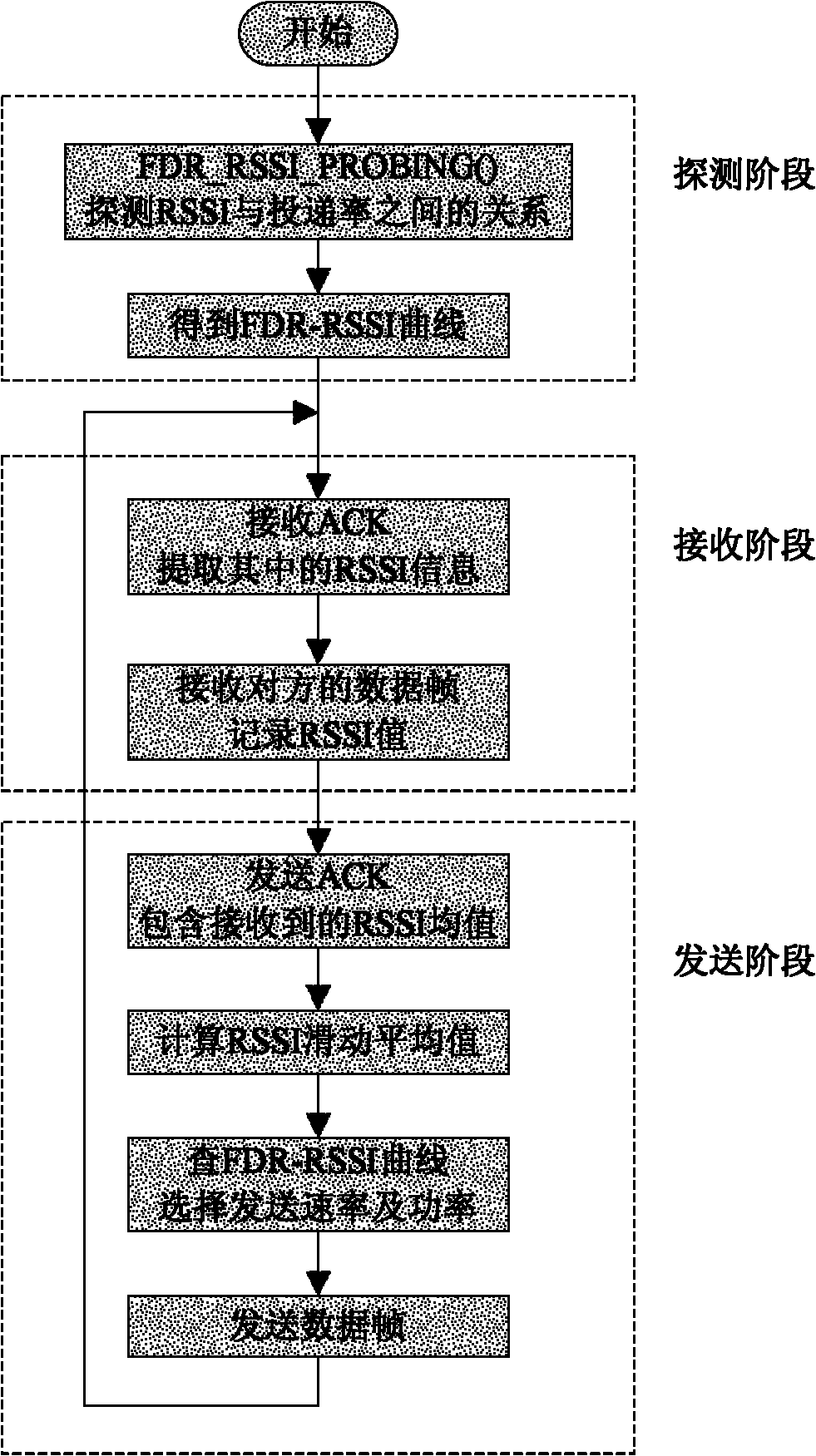Method for combined adjustment of adaptive rate and power of remote WiFi link
An adjustment method and self-adaptive technology, applied in power management, sustainable buildings, transmission systems, etc., can solve the problems of slow response of link conditions and inability to adapt to rapid changes in channels, and achieve low additional overhead and reduce equipment power consumption. Effect
- Summary
- Abstract
- Description
- Claims
- Application Information
AI Technical Summary
Problems solved by technology
Method used
Image
Examples
Embodiment Construction
[0026] In order to achieve the above purpose, the present invention designs a technical scheme for joint adjustment of transmission rate and transmission power based on a simple time-slotted TDMA MAC protocol. The main idea is to first detect the functional relationship between the physical layer information of the received signal, the wireless network performance, and the energy consumption of the device, and then select the appropriate transmission rate and power.
[0027] The present invention selects received signal strength (RSSI) as the physical layer information amount for reference. RSSI is a quantity that characterizes the signal strength, which indicates the signal strength received by the antenna when a frame is received. RSSI can be directly obtained from the network card driver, and can better reflect the link status, so it can be used as the basis for rate adjustment.
[0028] In the first step, the relationship between RSSI and network performance is detected ...
PUM
 Login to View More
Login to View More Abstract
Description
Claims
Application Information
 Login to View More
Login to View More - R&D
- Intellectual Property
- Life Sciences
- Materials
- Tech Scout
- Unparalleled Data Quality
- Higher Quality Content
- 60% Fewer Hallucinations
Browse by: Latest US Patents, China's latest patents, Technical Efficacy Thesaurus, Application Domain, Technology Topic, Popular Technical Reports.
© 2025 PatSnap. All rights reserved.Legal|Privacy policy|Modern Slavery Act Transparency Statement|Sitemap|About US| Contact US: help@patsnap.com



